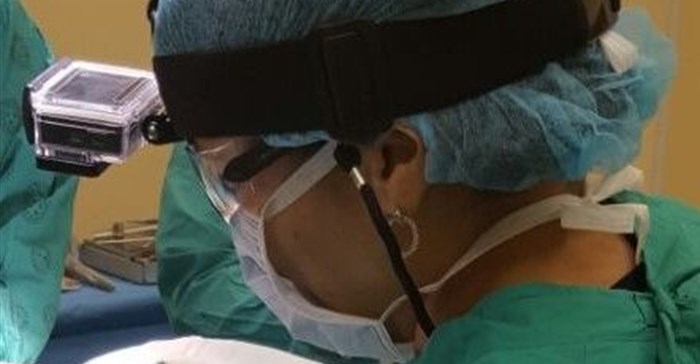
Top stories



LegalTsotsi star’s house, bought with lottery funds, frozen by Special Tribunal
Raymond Joseph 10 hours



More news



“Wearable GoPro cameras allow recordings of surgical procedures from the surgeon’s view for additional educational purposes. These recordings could be used as supplemental material towards self-learning and revision by students and to build video libraries for research and assessments as well,” says Prof Karin Baatjes from the Division of Surgery in SU’s Faculty of Medicine and Health Sciences.
She and Alex Keiller from SU’s Centre for Learning Technologies, Alwyn Louw* from SU’s Centre for Health Professions Education and Marietjie van Rooyen from the University of Pretoria assessed the feasibility of using the GoPro HERO camera to record operations at Tygerberg Academic Hospital for educational purposes. The findings of their study were published in The Clinical Teacher recently.
Baatjes says there is a need to review surgical training and to seek innovative educational alternatives.
“Resources for training of the surgical operative technique are limited. These include limited training time, variable exposure to procedures during the clinical rotation and inadequate opportunities to review procedures outside of the operating room. Furthermore, the trainee’s view of the procedure differs from that of the operating surgeon.
“We therefore decided to evaluate the GoPro camera in real-time operating room circumstances to determine its practicality as an education adjunct for surgery.
“These devices are small, lightweight, robust, and are wearable or mountable on objects. It captures high-definition videos through a wide angle lens that enables surgeons to record procedures with ease in any operating room and consultation room for minor procedures.”
Eight operations were performed by three surgeons who wore a head-mounted GoPro camera and the recordings took place during operative procedures on the standard weekly theatre lists to avoid impeding workflow and compromising theatre time or the patients’ condition.
According to Baatjes, the recordings allow trainees a procedural view from the surgeon’s perspective and do not interfere with sterility, the duration of procedure nor the operating room environment.
“Clinical personnel encountered no interference with operative sterility, procedural length, nor functioning in the operating room. Technically, the quality and picture field were adequate.
“The recording of surgical procedures on the GoPro camera as an educational adjunct is practical and user-friendly, and does not impair clinical patient care. The videos have cross‐discipline potential for teaching within medicine.”
Baatjes says the recording is done in MP4 format and therefore usable on various platforms.
She emphasises that even though the videos can be used as supplemental material towards self-learning and revision by students, they should not replace active participation in operations.
Baatjes mentions that some of downsides were that surgeons found the camera head band too tight and the camera heavy. The battery required recharging in between prolonged cases.
“Not all operations were suitable for recording and not all patients provided consent for their procedures to be documented, leading to a small series of videos.”
Baatjes says newer models of the camera are lighter and have prolonged battery life, which would alleviate the problems encountered during the study.
She adds that in the next phase they will focus on implementing the teaching videos in the surgical curriculum.